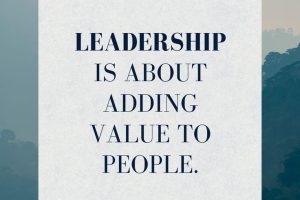Development Goals for Leadership
In today’s ever-evolving landscape, effective leadership is more crucial than ever. But to truly thrive, leaders need to prioritize their growth along with that of their teams. “Development Goals for Leadership” dives into the heart of this essential topic, outlining key areas where leaders can set meaningful goals for self-improvement. From honing communication skills to fostering empathy and building strategic thinking, this exploration will equip you with the tools and inspiration to unlock your full potential as a leader, driving both personal and organizational success.
Understanding Leadership Development Goals
Leadership development goals encompass a range of objectives aimed at enhancing leadership capabilities and competencies. These goals may focus on various aspects, including communication skills, decision-making abilities, emotional intelligence, and strategic thinking. At their core, leadership development goals are about honing the skills and qualities needed to inspire, motivate, and guide others towards a common vision. Also, read about the Executive Director
Key Components of Effective Leadership Development Goals
Effective leadership development goals share several key characteristics. Firstly, they are clear and specific, providing a concrete direction for growth. Additionally, these goals are measurable, allowing progress to be tracked and evaluated objectively. Moreover, they are relevant to both personal aspirations and organizational needs, ensuring alignment with broader objectives. Lastly, effective leadership development goals are time-bound, with defined deadlines that create a sense of urgency and accountability.
The Benefits of Setting Development Goals for Leadership
The benefits of setting development goals for leadership are manifold. Firstly, they facilitate self-awareness and self-management by prompting individuals to reflect on their strengths, weaknesses, and areas for improvement. Secondly, they contribute to enhanced decision-making skills, as leaders learn to weigh options carefully and make informed choices. Additionally, setting development goals fosters motivation and productivity by providing a sense of purpose and direction. Lastly, such goals promote better team collaboration and communication, as leaders strive to cultivate an environment of trust and respect. Discover more about the Managing Director

Strategies for Setting and Achieving Leadership Development Goals
Achieving leadership development goals requires a structured approach. Firstly, individuals should conduct a thorough self-assessment to identify areas of strength and areas needing improvement. Seeking feedback from peers, mentors, and supervisors can provide valuable insights and perspectives. Once goals are identified, it’s essential to create an action plan outlining specific steps and timelines for achievement. Regularly tracking progress and making adjustments as needed are also critical aspects of goal attainment.
Common Challenges and How to Overcome Them
While setting development goals is valuable, it’s not without its challenges. One common pitfall is setting overly ambitious goals that are unrealistic to achieve within the given timeframe. To overcome this, it’s important to break larger goals into smaller, more manageable tasks. Procrastination and lack of accountability are also common hurdles. Establishing regular check-ins and accountability mechanisms can help individuals stay on track and motivated. Additionally, resistance to change may arise, particularly when goals require stepping out of one’s comfort zone. By acknowledging and addressing fears or insecurities, individuals can navigate through these challenges more effectively.

Case Studies: Successful Implementation of Leadership Development Goals
To illustrate the effectiveness of leadership development goals, let’s examine a few real-world examples.
- Company X: By implementing a leadership development program focused on communication and conflict resolution skills, Company X saw a significant improvement in team cohesion and employee satisfaction.
- Individual Y: Through setting personal development goals around emotional intelligence and adaptability, Individual Y was able to successfully transition into a leadership role and drive positive change within their organization.
Conclusion
In conclusion, development goals play a pivotal role in shaping effective leadership. By setting clear objectives, individuals can continuously evolve and refine their skills, ultimately becoming more impactful leaders. Through self-reflection, strategic planning, and perseverance, anyone can unlock their leadership potential and contribute to positive organizational outcomes.
FAQs
- How do I know which development goals are right for me?
Identifying suitable development goals begins with assessing your strengths, weaknesses, and career aspirations. Consider what skills or qualities would enhance your effectiveness as a leader and align with your long-term objectives.
- What if I fail to achieve my development goals?
It’s essential to view setbacks as opportunities for learning and growth rather than as failures. Reflect on the reasons for the setback, adjust your approach if necessary, and persist in your efforts towards goal attainment.
- How often should I review and update my development goals?
Regular review and revision of development goals are recommended, ideally on a quarterly or semi-annual basis. This allows for adjustments based on changing circumstances, feedback, and evolving priorities.
- Is it beneficial to share my development goals with others?
Yes, sharing your development goals with trusted colleagues, mentors, or supervisors can provide accountability, support, and valuable feedback. It can also foster a sense of collaboration and shared purpose within teams or organizations.
- What if my organization does not have a formal leadership development program?
Even in the absence of a formal program, individuals can take proactive steps towards their development. Seek out learning opportunities, engage in mentorship or coaching relationships, and leverage online resources and networks to support your growth journey.
